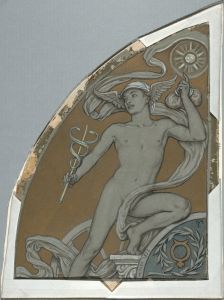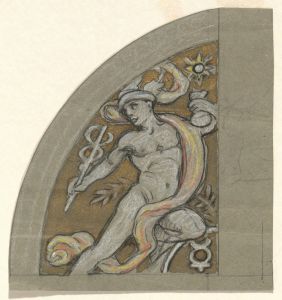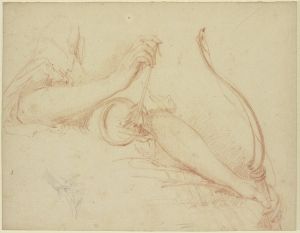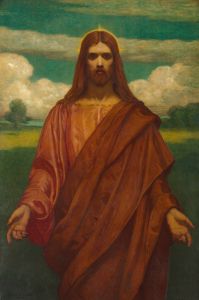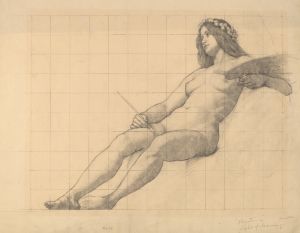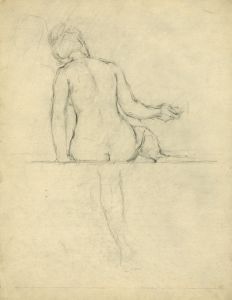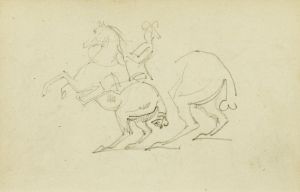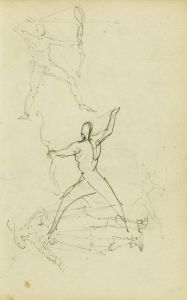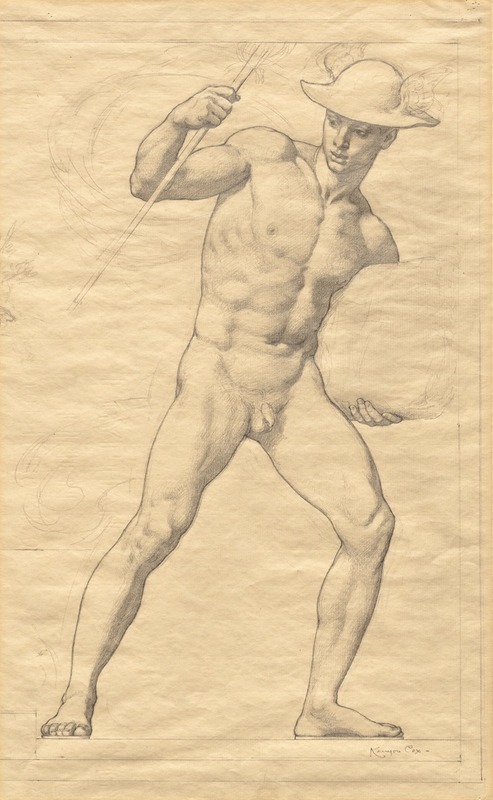
Mercury
A hand-painted replica of Kenyon Cox’s masterpiece Mercury, meticulously crafted by professional artists to capture the true essence of the original. Each piece is created with museum-quality canvas and rare mineral pigments, carefully painted by experienced artists with delicate brushstrokes and rich, layered colors to perfectly recreate the texture of the original artwork. Unlike machine-printed reproductions, this hand-painted version brings the painting to life, infused with the artist’s emotions and skill in every stroke. Whether for personal collection or home decoration, it instantly elevates the artistic atmosphere of any space.
Kenyon Cox (1856-1919) was an American painter, illustrator, muralist, and writer, known for his academic style and contributions to American art in the late 19th and early 20th centuries. One of his notable works is the painting "Mercury," which exemplifies his skill in classical representation and his dedication to the ideals of the Renaissance and neoclassical art.
"Mercury" by Kenyon Cox is a depiction of the Roman god Mercury, known as Hermes in Greek mythology. Mercury is traditionally recognized as the messenger of the gods, as well as the god of commerce, communication, and travelers. In Cox's painting, Mercury is portrayed with the attributes commonly associated with him: a winged helmet and winged sandals, which symbolize his swiftness and ability to move freely between the mortal and divine worlds.
The painting reflects Cox's academic training and his admiration for classical antiquity. He studied at the Pennsylvania Academy of the Fine Arts and later at the École des Beaux-Arts in Paris, where he was influenced by the works of the Old Masters and the principles of classical art. This background is evident in "Mercury," where Cox employs a balanced composition, precise anatomy, and a harmonious use of color to convey the elegance and dynamism of the mythological figure.
Cox's "Mercury" is also notable for its attention to detail and the idealized form of the god, which aligns with the neoclassical emphasis on beauty and perfection. The painting captures Mercury in a moment of poised action, suggesting both his role as a swift messenger and his divine grace. The use of light and shadow in the painting enhances the three-dimensionality of the figure, giving it a lifelike presence.
Throughout his career, Kenyon Cox was an advocate for the academic tradition in art, which he believed was essential for the creation of high-quality and meaningful works. He was a prominent figure in the American art scene, contributing not only as an artist but also as a critic and educator. Cox's writings on art theory and criticism were influential in shaping the discourse on American art during his time.
"Mercury" is a testament to Cox's mastery of the academic style and his commitment to the ideals of classical art. It remains an important work in the context of American art history, reflecting the broader cultural and artistic movements of the late 19th and early 20th centuries. The painting is a celebration of mythological themes and the enduring appeal of classical beauty, showcasing Cox's ability to blend technical skill with artistic expression.
In summary, Kenyon Cox's "Mercury" is a distinguished example of neoclassical painting, characterized by its precise execution, classical subject matter, and the artist's dedication to the academic tradition. It stands as a significant piece within Cox's oeuvre and the broader landscape of American art from that era.





